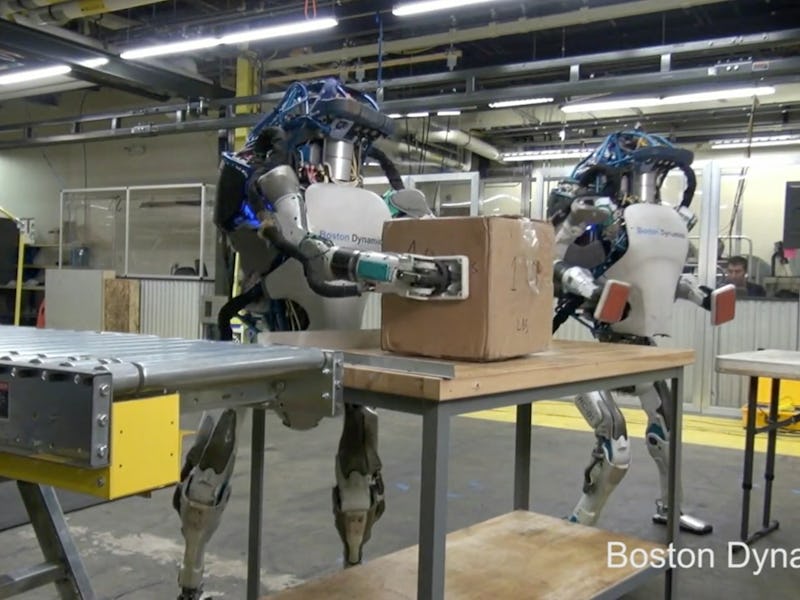Robots and Automation Will Have Taken Over 52 Percent of Tasks by 2025
The "fourth industrial revolution" is already underway.

More than half of the work that’s done on plant earth will be completed by robots or some form of automation by the year 2025, according to the latest projection from the World Economic Forum. That’s the equivalent of some 75 million jobs lost in fields like data entry, accounting, and customer service, though the organization also estimates that society’s push to automation will create a lot more jobs than it eliminates.
A lot of the automated work will probably be in fields like information and data processing, where robots will overtake humans in terms of task hours logged by the year 2022. But automation is also already replacing people at that “most human” of tasks, decision-making: WEF’s report estimates that by then, automation will handle about 28 percent of the task hours spent on decision making, up from about 19 percent today.
This is a good thing in a lot of ways. In terms of jobs, for example, the trade-off isn’t even all that close: The WEF expects 133 million new jobs by 2022, more than enough to offset the losses by about 58 million jobs, give or take. When you take the most boring, mundane tasks off an employee’s hands, they often find more interesting and productive things to do with their time.
But there’s also no guarantee that that the best-case scenario will play out. Indeed, there are likely four major obstacles to be overcome if automation is going to contribute to our prosperity without also driving unemployment, job displacement, and rising inequality.
Automation is projected to create a lot more jobs than it eliminates, but there is a catch.
One problem that we as a society need to figure out is now to get workers, employers, and governments to work together better. None of them are particularly aligned in the short term, but zoom out and we’re all pretty much all in same boat. The big automakers would benefit, for example, if they all kicked in some cash to help train people in the job skills big automakers need. But of course, no one wants to be the first one to come forward with all the dish about what kinds of skills would be best.
Governments also need to get ready for the shift, for example by investing more in developing job training centers, a stronger safety net, and perhaps even something the WEF calls “individual training accounts” to make it easier to pay for classes.
As for the types of jobs these retrained people will be doing? It’ll actually be a mix of highly technical jobs and also jobs that are heavy on the soft-skills, which robots obviously have a trickier time mastering. Data analysis and machine learning are the two top fields as far as expected growth, the WEF’s report notes, but the third is management operations. A lot of the workers of the future, too, will probably wind up working in sales.
Most of these jobs and tasks will be taken over by stationary or air-born/aquatic robots working in industries like manufacturing and oil and gas. But a pretty surprising number of these robots — 23 percent — will be humanoid robots, mostly working in industries like financial services. Robots are already helping you make financial decisions, in short order they’ll be shaking your hand and helping you sign the dotted line too.